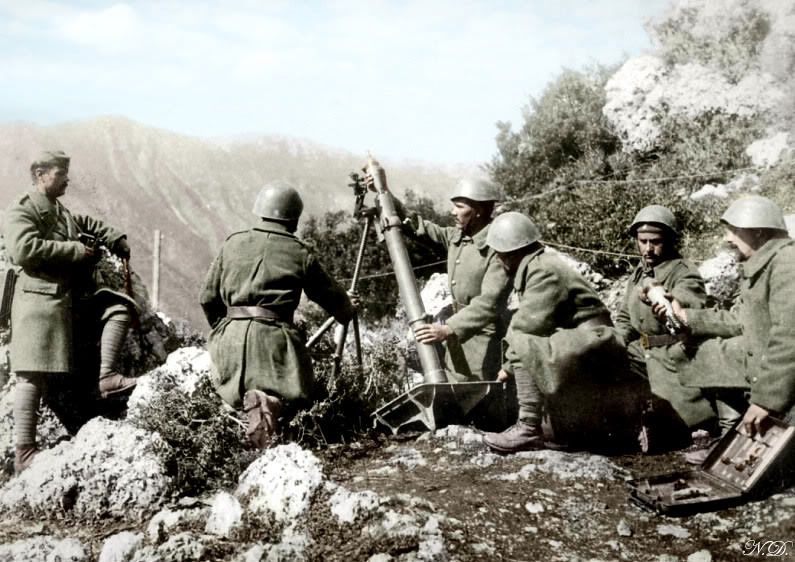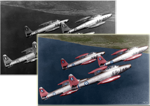 Following the disaster of the Asia Minor campaign, the Greek army was in disarray, lacking direction and equipment. In 1930, the purchase of mortars was limited to only ten 81mm mortars with 25 shells each. When Metaxas took over in 1936, he launched a large rearmament programme, which included 315 Stokes-Brandt 81mm mortars from France. The well-trained Greek mortarmen made good use of them during the Greco-Italian war.
Following the disaster of the Asia Minor campaign, the Greek army was in disarray, lacking direction and equipment. In 1930, the purchase of mortars was limited to only ten 81mm mortars with 25 shells each. When Metaxas took over in 1936, he launched a large rearmament programme, which included 315 Stokes-Brandt 81mm mortars from France. The well-trained Greek mortarmen made good use of them during the Greco-Italian war.Operational History
1930 - Greece purchases 10 81mm mortars. The type is unclear.
1936 or later - During Metaxas's premiership, Greece requests a large number of 81mm Stokes-Brandt mortars from France. With their factories fully occupied with their own critical needs for equipment, the French agree on a smaller order of 315 mortars.
28 Oct. 1940 - When Italy invades, Greece has 325 81mm mortars, 6 in every infantry regiment and 4 in every cavalry regiment.
post-war - Realistically, any remaining Stokes-Brandt mortars must have been captured by the Germans in 1941. However, Greece continues using for decades the M1 81mm mortar, which is the U.S. version of the same mortar.
Specifications
81mm Stokes-Brandt mortar M.1927/31
Weight: 56 kg
Barrel Length: 1.26 m
Crew: 3
Caliber: 81mm
Rate of Fire: 18 rounds per minute
Effective Range: 1,000 - 1,900m
For gamers and game designers
General Prasca, who led the initial offensive in the Greco-Italian war, was impressed by the efficiency of the Greek mortars and expressed the opinion that they were using special ammunition. Of course, this was not true.
For modellers 

Very interesting blog. Congratulations!!!
ReplyDeleteOne remark : the infantry regiments had also 4 81mm mortars (along with 2 65mm escort guns)
abn